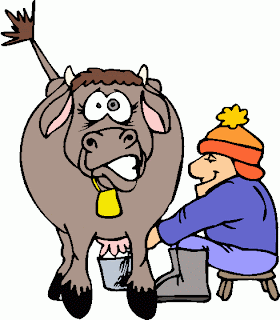How Markets Work: Transaction Costs and Market-Makers
According to Adam Smith, markets somehow reach equilibrium through an “invisible hand.” He only used this phrase once in his massive Wealth of Nations. This is about as close as a Scottish Enlightenment philosopher could come to a mystical interpretation of social behavior.
The basic theory of perfect competition says that small producers of identical products passively accept the market price set by industry-wide supply and demand. The conclusion that they can only adjust output within a narrow range is unrealistic in a modern economy. Economists don’t even have a realistic model of how this is done or how long adjustments take. A market is in disequilibrium during the adjustment period.
In a world of large corporations and imperfect competition, economic change is a function of decisions made inside firms, not the automatic workings of markets. Economics should concentrate on firms, not markets.
Markets don’t function because of some invisible hand but because huge resources are developed and deployed to make them function more efficiently. Knowledge is privatized before economic activity begins.
Much of recent economic theory concentrates on how markets do not work smoothly or reach the theoretical equilibrium, due to such factors as transaction costs, asymmetric information and moral hazard. The general equilibrium model, or Walrasian model, is the limiting case of how markets operate if there are no transaction costs, asymmetric information or moral hazard.
Transaction Costs and Market Makers
Much of the discussion about how markets work focuses on transaction costs, the costs companies incur in attempting to use markets. Transactions costs include finding suppliers, gathering market information, negotiating and contracting with other companies, reducing risk, and monitoring performance of suppliers and customers. These transaction costs can be very high. Imagine that if you wanted to buy a pair of Nikes you had to travel to Vietnam, where they are produced (at $4/pair). This creates an opportunity for other companies to reduce the transaction costs along the supply chain. It is market-makers like shipping companies, container trains, trucking companies, wholesalers and retailers that make production in Vietnam possible.
In almost every market, there are market-makers between buyers and sellers. They reduce the transaction costs of using the market to find suppliers and customers along the supply chain. They bring buyers and sellers together.
It is estimated that about one-fourth of the value-added in the economy is provided by these companies. (Daniel Spulber, Market Microstructure: Intermediaries and the Theory of the Firm, 4, 22-26) Collectively, they are called market-makers. They include brokers and agents, information providers like Edmonds and Carfax, financial companies, transportation companies (UPS), distributors, wholesalers and retailers (including online retailers and market makers like eBay). In addition, many of the employees of manufacturing and assembly corporations in bilateral oligopolies perform the same functions in purchasing and sales departments.
Market-makers expand markets by reducing transaction costs and the price to consumers. Through modern versions of Adam Smith’s famous dictum – “That the Division of Labour is limited by the Extent of the Market” – market-makers also create the profit incentive for producers to invest in expanding output and reducing unit cost as a result of economies of scale. There would not be large corporations in modern economies without market-makers.
Market-makers also overcome the problem of “adverse selection” by providing information to buyers and sellers.
The Special Role of Retailers
What do large retailers do?
Forecast sales of a mix of products to actual and potential customers.
Negotiate net price and sales conditions with suppliers.
This is a complicated and expensive activity carried out by specialized market makers.
Reduce prices if sales forecasts are too optimistic or they want to clear inventory for new merchandise. Sometimes “sales” of a percent of a purchased item is built into the expected average margin. This is a form of price discrimination (different prices for different groups of consumers), higher prices for early buyers and lower prices for later buyers.
Fortunately for consumers, there is tremendous competition among retailers. They compete partly on their ability to reduce the total cost to consumers in money, time and search. They are market makers who reduce the transaction costs of consumers.
Conclusion
Market makers are often large companies with substantial market power to influence the cost and conditions of transactions. They exist because they reduce the transaction costs of buyers and sellers in a market. Often they create or expand the market. If they did not exist, the transaction costs would be too high for some buyers or sellers. As much as I like a good Napa cabernet sauvignon, I’m not going to spend $1,000 in air fare and car rental to go to Napa to buy a bottle.









Comments
Post a Comment